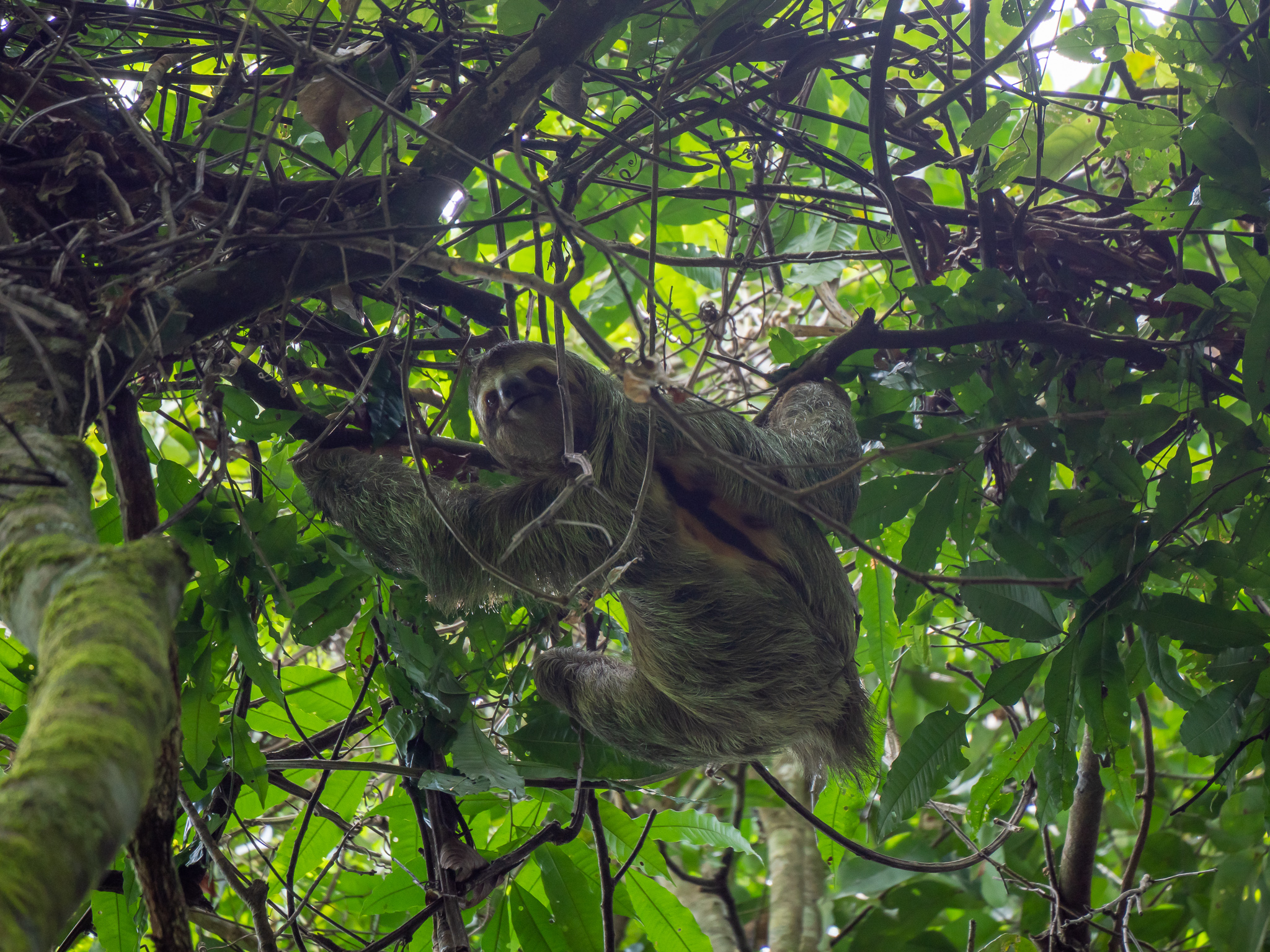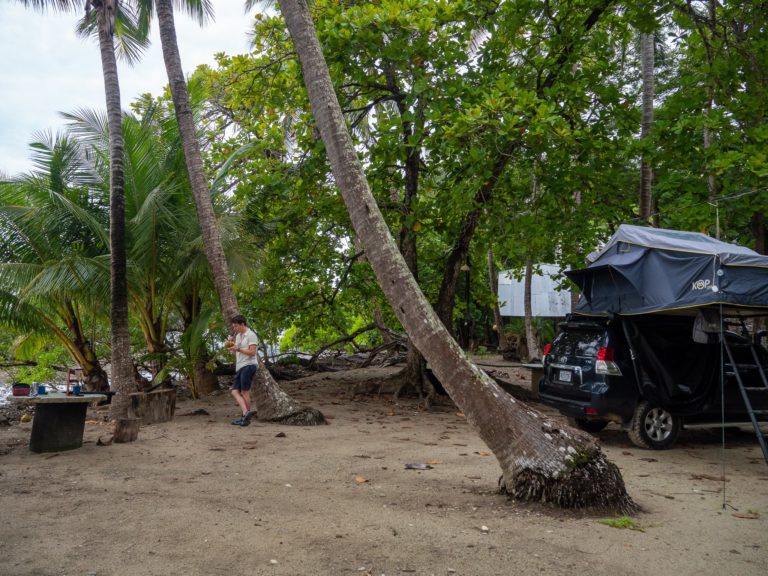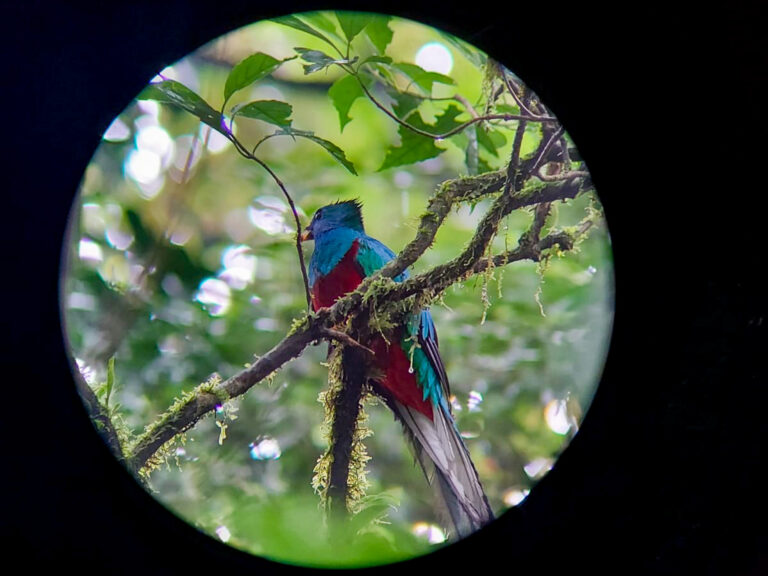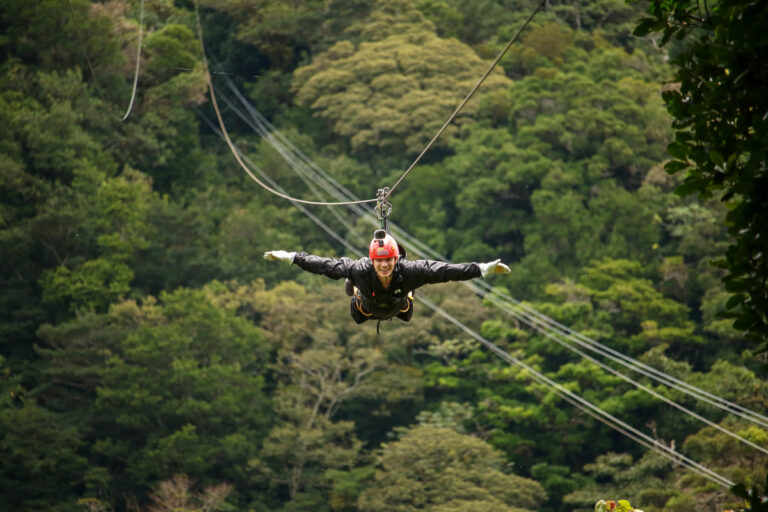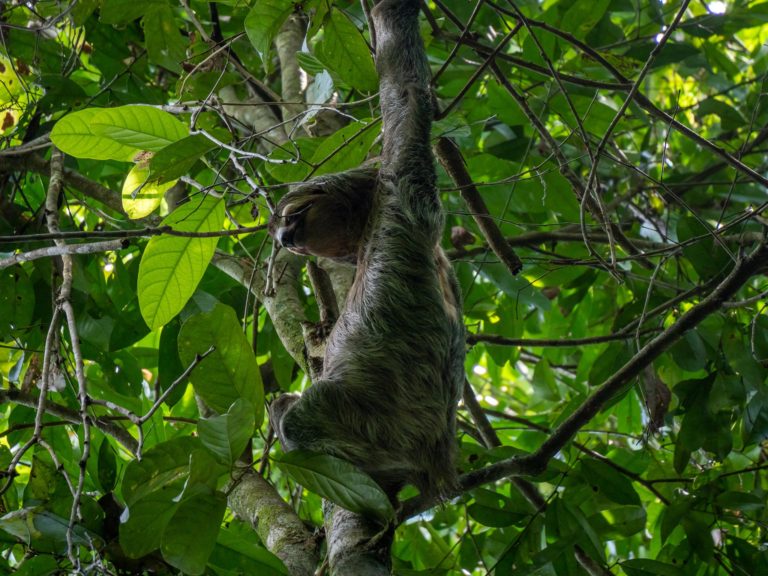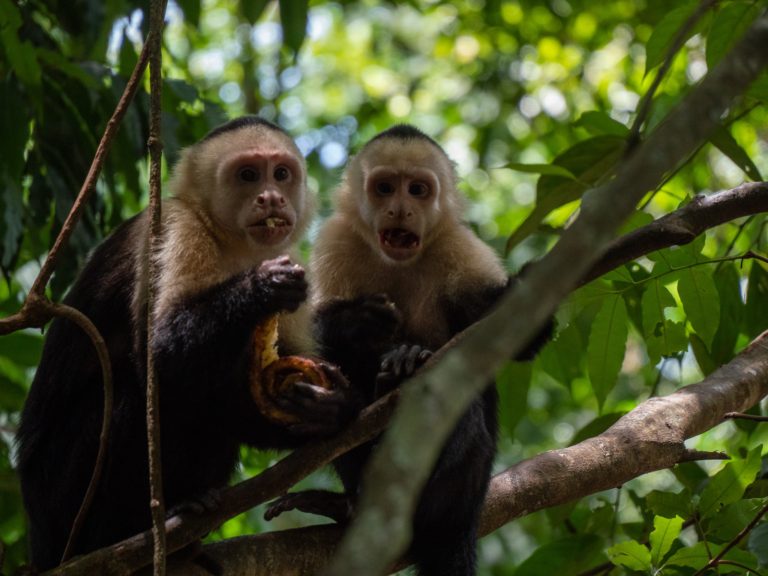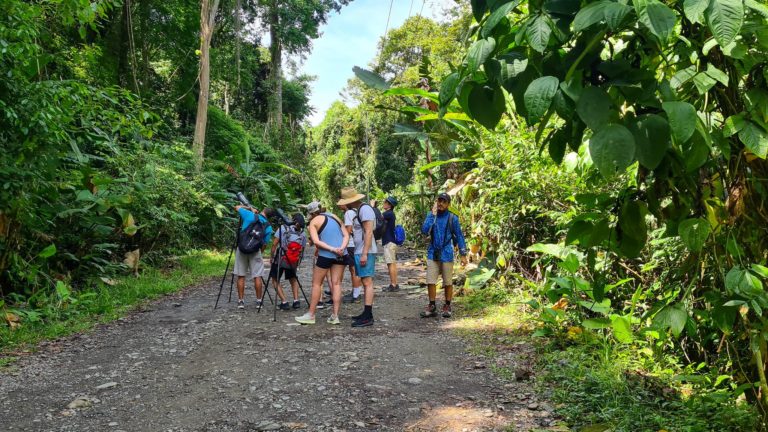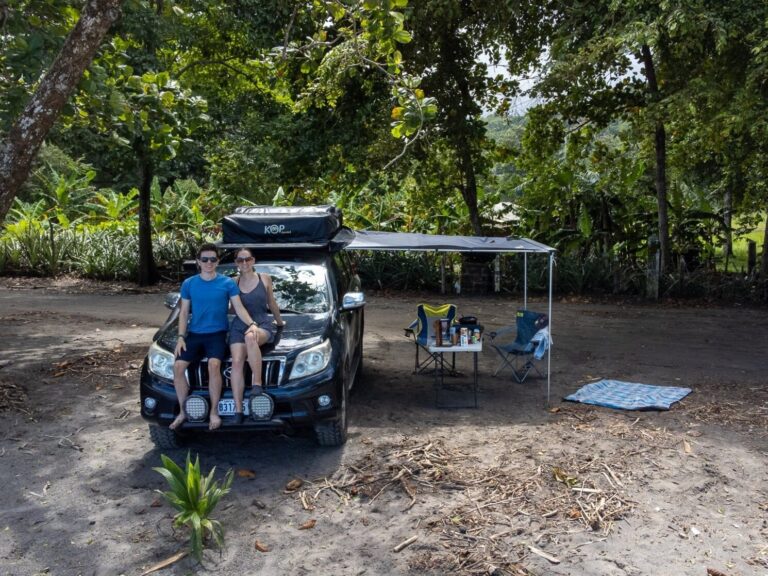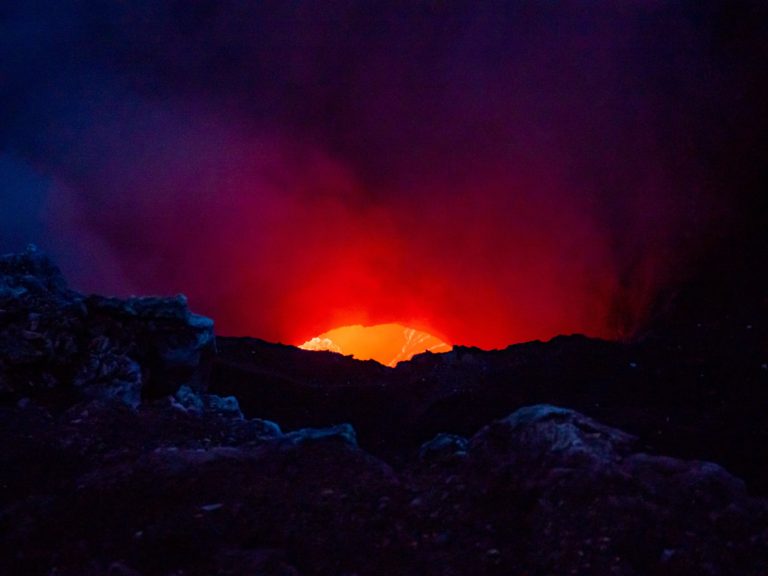Should you hold a sloth in Costa Rica?
Can you hold a sloth in Costa Rica, and should you? Everything you need to know about ethical sloth encounters.
(Updated 2024)
This post may contain affiliate links, which means we might earn a small commission on anything purchased through these links at no extra cost to you. Learn more on our Disclaimer page.
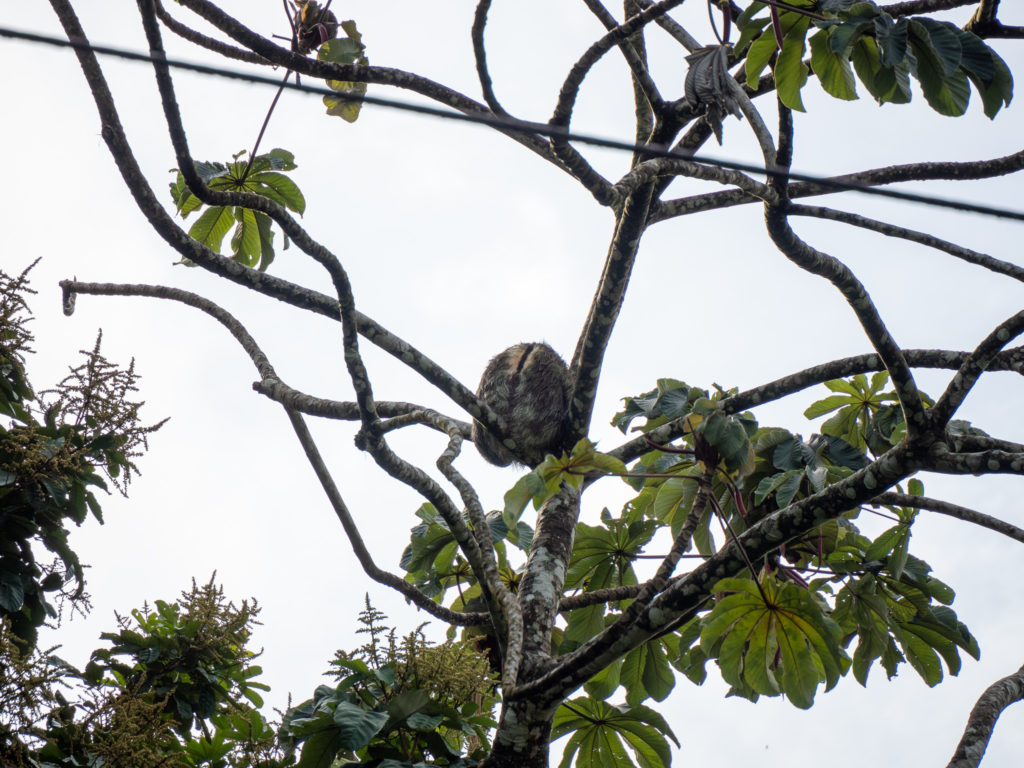
Famed for their relaxed nature and cuddly appearance, sloths have become an increasingly popular animal, with more and more sloth experiences catering to travellers’ desire to see one for themselves on their vacation. While sloths can be seen in the wild in many places in Latin America, seeing a sloth in captivity is a sure-fire way to guarantee a sighting of these tree-dwelling furballs. Unfortunately, not all sloth encounters are ethical. Many establishments offer tourists the opportunity to interact with sloths in exchange for money. While misguided travellers may think this is a brilliant way to get up close to a sloth, it can actually be incredibly harmful. Touching a sloth can be detrimental, not only to the animal’s physical body, but also to their mental health. Read on to find out the issues with captive sloth experiences, why holding sloths is bad and how to experience sloths ethically instead.
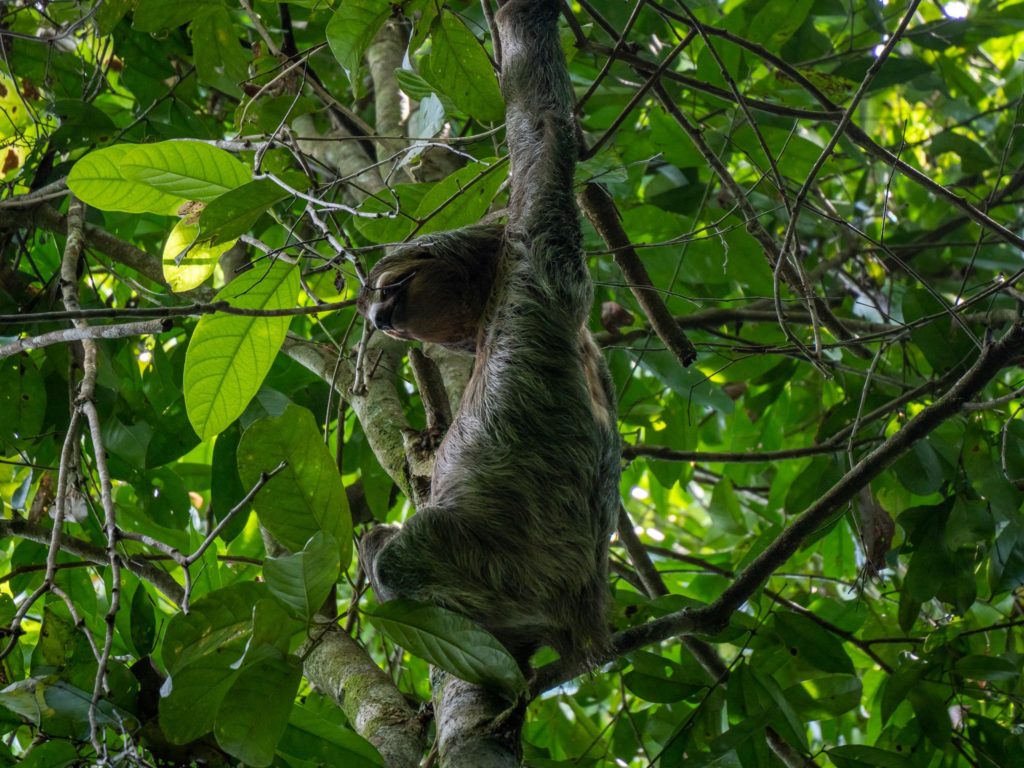
About Sloth Interactions
Sloths (perezosos in Spanish) are humble, gentle beings with a unique appearance and aura. Many travellers to Central and South America dream of experiencing a hands-on sloth encounter themselves. While sloths can be seen for free in the wild, many people choose to pay for a sloth encounter as it guarantees an up close and personal experience. There is now a long list of sloth experiences including sloth yoga, sloth sleepovers, sloth swimming, taking a sloth selfie and hugging or holding a sloth, where tourists can interact with these cute creatures. Chances are you’ve seen one of these activities online or on social media. Unfortunately, this normalises sloth-human interaction and promotes the encounter as desirable. Travellers think it’s ok to hold a sloth because they’ve seen others do it before. So they travel to destinations like Costa Rica with a sloth encounter activity at the top of their bucket list. Then they interact with a sloth in a way that can actually be harmful to the animal and end up unknowingly supporting illegal and immoral practices. We want to raise awareness of ethical issues when it comes to sloth encounters and help travellers make better, informed and moral decisions regarding animal interactions.
Read next: Where to see Sloths (+ other wildlife) in La Fortuna
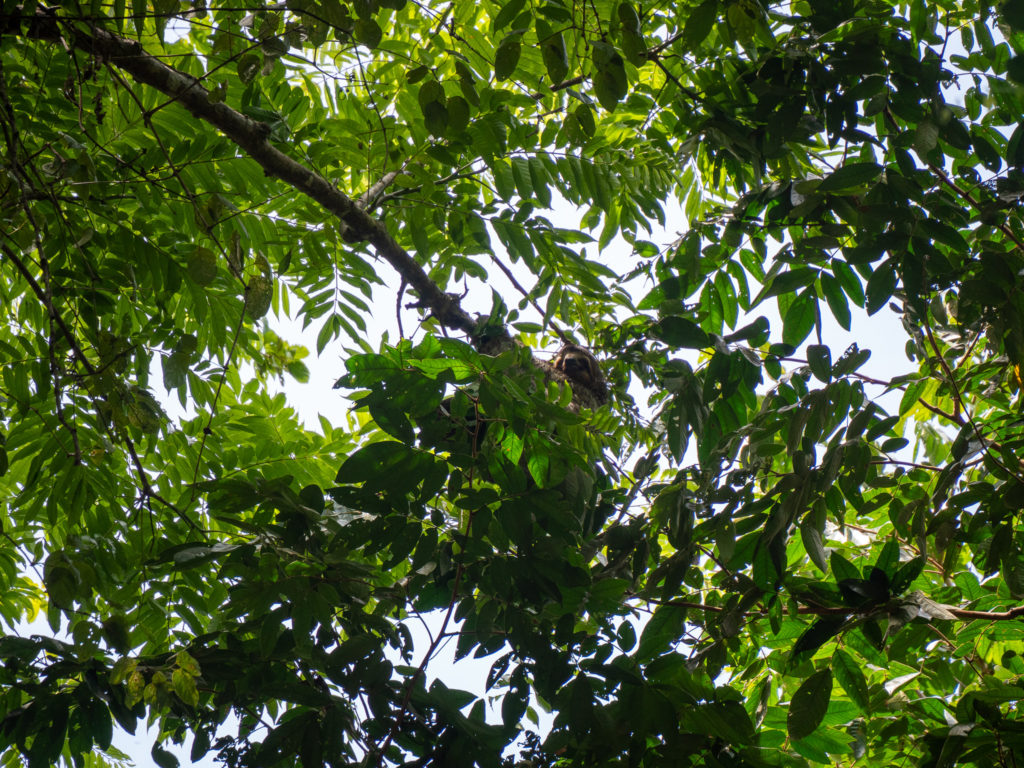
Ethical Sloth Encounters
Many people don’t realise the harm their actions can have on wildlife, and it often takes a negative experience to realise the encounter was unethical in the first place. Unfortunately, many sloth encounters are not ethical. But the real issue is that many providers of sloth interactions actually claim they are sustainable experiences. Examples of this range from claims the sloth has been rescued, is being rehabilitated in captivity and using sustainable buzzwords like ‘sanctuary’ or ‘eco-friendly’, when the experience is actually nothing of the sort. This greenwashing can make it really hard to determine whether the experience you’re booking is actually ethical or not. In this article, we’ve listed red flags to look out for when booking a sloth experience, the ethical issues with holding sloths and how you can experience sloths ethically on your trip.
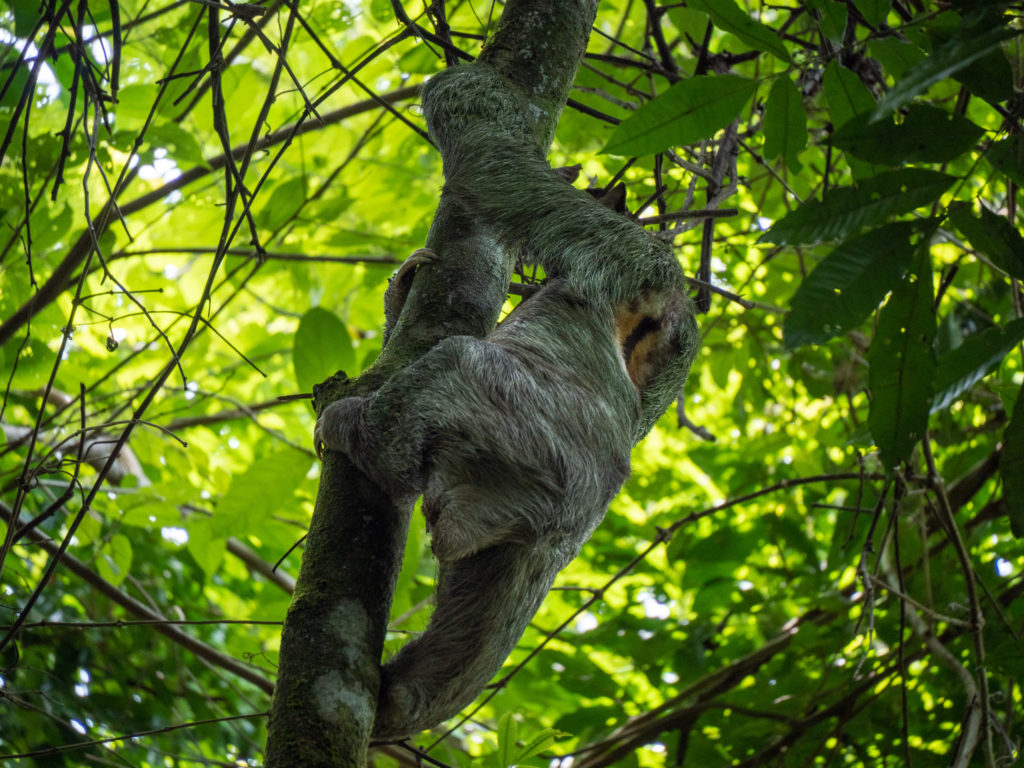
Should you hold a sloth?
Sometimes with animal encounters, what you can do and what you should do differ depending on context. But in the case of sloths, there’s a pretty clear answer: it is almost never ok to touch a sloth. This includes holding, hugging/cuddling and stroking sloths. Even activities like swimming with sloths, which don’t involve human touch, can be harmful. Holding a sloth is detrimental to its physical and mental health. There’s a wealth of scientific research to support the notion that human interaction with sloths is bad for them. We’re going to expand on the harm touching a sloth can have in this article. But the short answer is that you should not hold a sloth.
Read next: Should You Touch a Grey Whale in Baja California Sur?
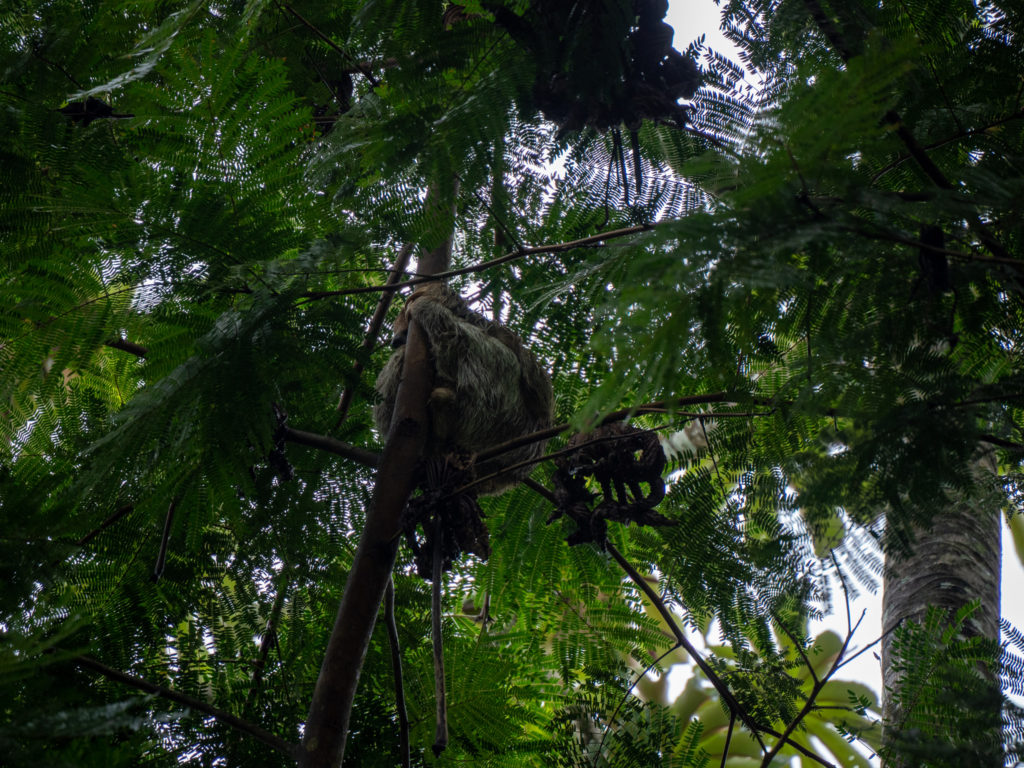
Issues with holding sloths
There are multiple issues with holding sloths that can have severe effects. These range from individual biological effects to environmental disturbance and the impact on the species. Here are some of the main issues with captive sloth experiences that allow human interaction.
Are sloth sanctuaries ethical?
Most sloth experiences take place with sloths that are held in captivity. Firstly, when researching a sloth encounter, you must ask yourself why the sloth is in captivity. Usually, the answer is that the establishment is a sanctuary or wildlife refuge where the sloth is being held for rehabilitation purposes. It’s important to note that ethical sanctuaries and refuges have rehabilitation and release programmes and will only keep sloths in captivity for as long as they need to recover, or if they cannot be returned to the wild. Unfortunately, many unethical sloth experiences will call themselves a sanctuary and say a sloth is held for these reasons, but it actually isn’t.
If money is paid for a sloth experience that negatively affects the animal, it is not ethical – it is called animal exploitation.
Sloths are often treated poorly in captivity
Unfortunately, many captive sloths have been previously taken from the wild to be held as pets. Sloths do not make good pets and can be hard to look after properly as their natural environment and lifestyle is hard to replicate. This can lead to neglect and unintended harm to the sloth. Many non-profit and governmental organisations therefore run initiatives to confiscate sloths held illegally as pets and relocate them to sanctuaries and refuges for rehabilitation.
Due to increased industrial and agricultural development, many wild sloths are injured in accidents. These sloths are taken in by sanctuaries and wildlife refuges for rehabilitation and then released when they have recovered. If a sloth has been too badly injured, or its experience in captivity means its chances of survival in the wild are low, then it will never be able to be released back into the wild. These sloths live out the rest of their days in sanctuaries or wildlife refuges that provide appropriate care.
The issue with establishments like zoos or fake sanctuaries that allow tourists to visit (for a fee) is that they do not value the sloths’ wellbeing over making money. The sloths in these types of places have often been taken illegally from the wild and are not given the level of care in captivity that they need. They are often mistreated and neglected as the owners either don’t know how to properly care for sloths, or simply don’t care. There is evidence that, even if treated well, exposure to noise when in captivity can lead to behavioural changes that could indicate a reduced quality of life.
Sloths are stolen from the wild
The next question to ask when booking a sloth encounter is how the sloth ended up in captivity in the first place. As we’ve mentioned, in real sanctuaries and wildlife refuges the sloth is often confiscated by an official organisation, or injured. In unethical encounters, sloths are usually taken from the wild when they are just a baby. This is known as poaching and animals taken in this way are often then sold through the illegal wildlife trade. Babies are often ripped from their mothers before they naturally would be able to survive on their own in the wild. This is because babies will live longer than adults and are easier to domesticate. They can also put up less of a fight as they are smaller.
There is a direct correlation between the rise in unethical sloth encounters and the illegal poaching of sloths. As more tourists show interest in spending money on close and personal sloth experiences, it increases demand for these activities, which in turn creates demand for captive sloths.
By paying money to hold a sloth, you are likely directly funding the illegal poaching of wild baby sloths.
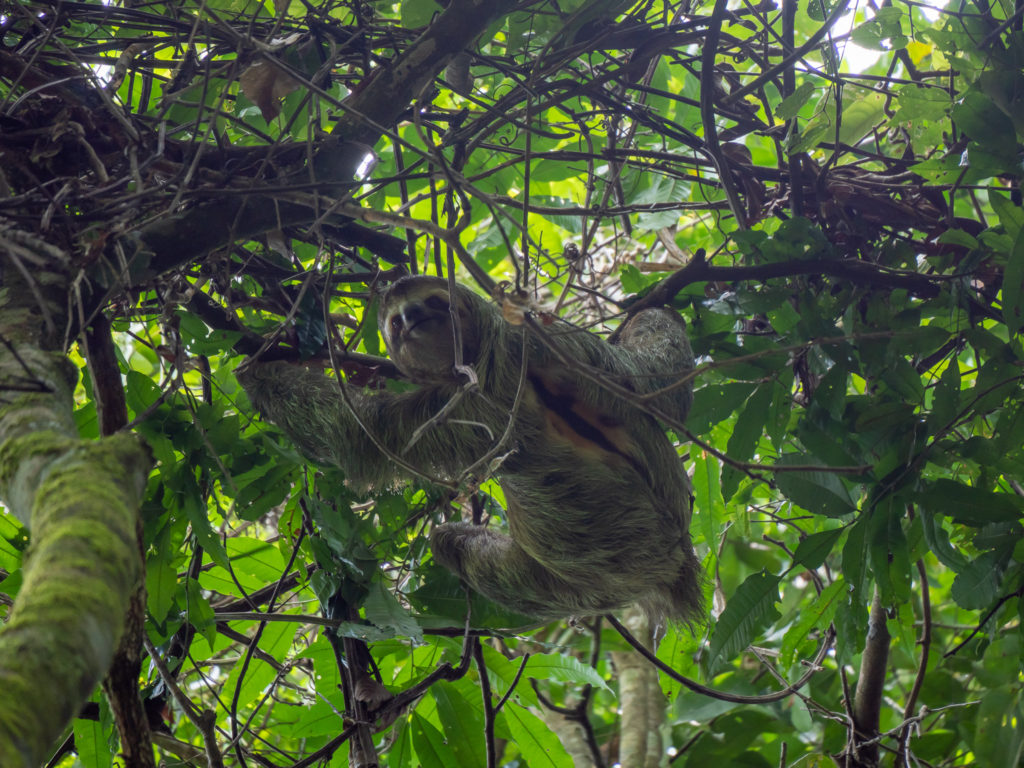
Disturbance of natural behaviours
Another huge issue with captive sloth interactions is that it is completely unnatural for a sloth. One of the key red flags of an unethical animal encounter is when the animal is put in a position that isn’t natural or wouldn’t occur in the wild. Whether it’s removed from its natural environment or trained to display behaviour it wouldn’t normally, this can be really detrimental to the animal’s wellbeing.
Sloths are creatures of habit. Unlike other species, sloths don’t enjoy changes to their environment. They are used to living in treetops and only come down to use the toilet once a week. They’re fairly static beings, spending most of their days eating and sleeping. Being removed from their enclosures, constantly handled and paraded around for human entertainment can cause a lot of physical and mental stress.
Sloth behaviour is misunderstood
Sloths are a prey species. In the wild, their main predators include eagles, wild cats and, of course, humans. Their survival instinct, while maybe misguided, is to hold as still as possible. This may not seem like the best fight or flight response, but their camouflaged furry coat can mean hiding in plain sight is an effective tactic against their predators. Unfortunately, this means that humans often mistake a sloth’s stillness as a sign it’s relaxed or enjoying contact. But there is plenty of evidence to the contrary.
Unlike many animals, sloths do not show external signs of stress. This again can make it very difficult for tourists to understand that the sloth they are interacting with is not enjoying the experience, but is actually being placed under a huge amount of stress.
You may have seen videos of sloths reaching their arms up like a baby asking for a cuddle. This is unfortunately another misunderstood behaviour. While we might interpret this as a sloth asking for human contact, it is actually a behaviour sloths display to appear bigger when frightened. Just as we’re taught to wave our arms and shout when threatened by a wild bear, sloths try to appear bigger to ward off that which they are afraid of.
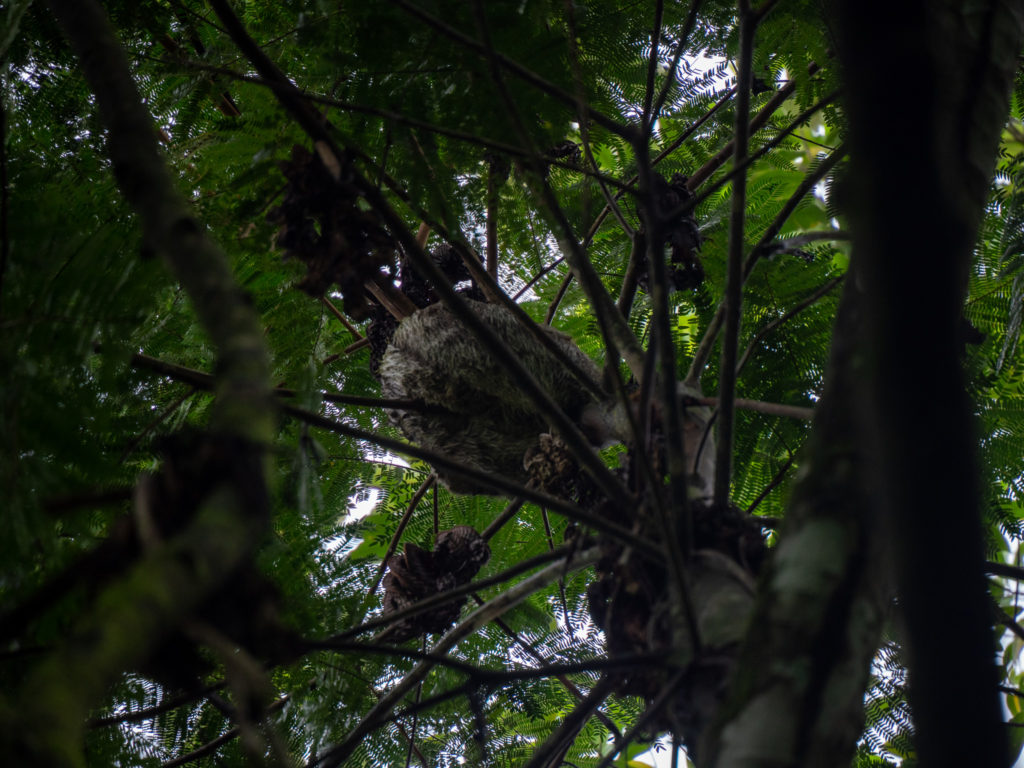
Human contact can be physically harmful to sloths
There is scientific research to support the fact that sloths do not enjoy human contact. As naturally solitary animals, sloths are unused to lots of contact with any animal. It is not natural for them to interact physically with another being in the way holding-a-sloth activities are set up.
Sloths have a symbiotic relationship with a complex ecosystem of algae that live in their fur. Touching and holding sloths can mess with this delicate balance. Sloths also have very sensitive eyes which can be harmed by prolonged exposure to bright light and flashes from cameras, particularly during photography encounters like sloth selfies.
Human touch can transfer harmful bacteria to sloths that can result in skin damage or rashes. Furthermore, their immune system can be compromised by the introduction of foreign allergens, viruses and microbes.
Unfortunately, young sloths that have been touched or held are very difficult to rehabilitate and return to the wild. As many captive sloths are illegally poached as a baby, this means they will never be able to live as they naturally should.
Human contact can be mentally harmful to sloths
Touching a sloth can cause an increase in stress, which is harmful to that animal’s wellbeing. There are scientific studies showing that sloths experience abnormal blood pressure and an increased heart rate as a result of contact with humans. Many sloths actually eventually die from prolonged trauma, with lifespans being much shorter in captivity in these conditions than in the wild.
Touching a sloth can lead to accidents and injuries
Stress can also lead to an increased risk of unpredictable behaviour, which could cause aggression or erratic behaviour. This could very easily lead to an accident or injury to the sloth or you. It is never 100% safe to touch an animal, wild or captive. Despite being a prey species, sloths have a sharp defence system of razor-sharp claws and teeth. Injury from a sloth could cause pain or lead to further complications like infection. Heightened stress can also lead to the sloth trying to escape the contact, which in turn can lead to accidents or the animal becoming injured.
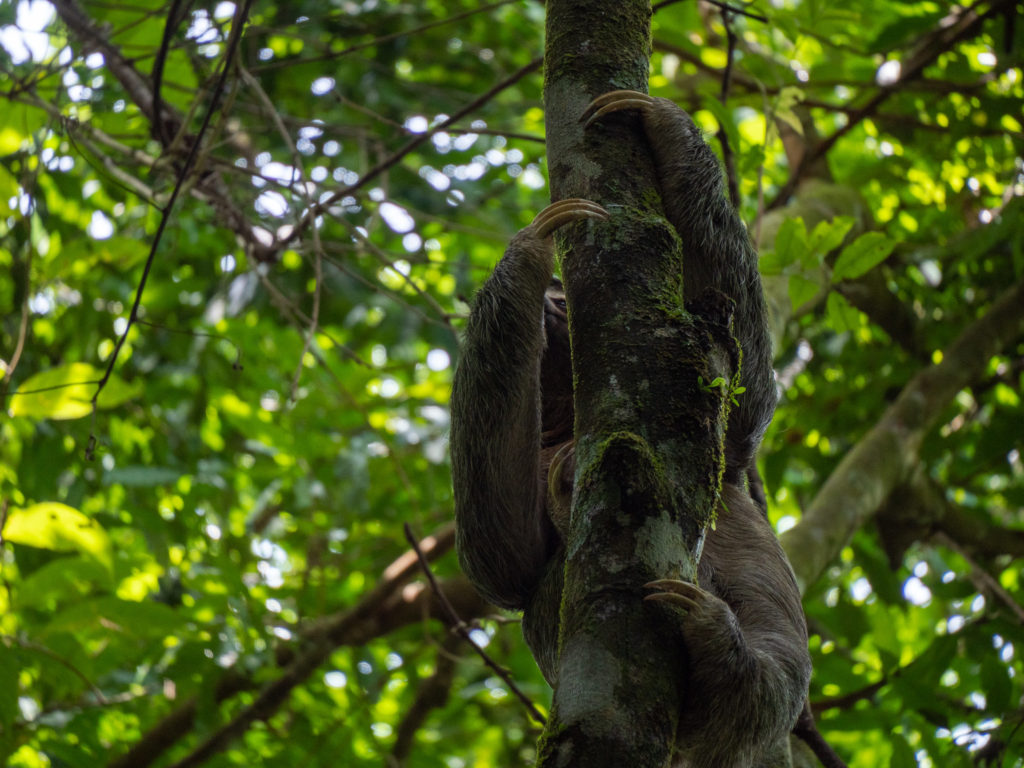
Summary
Any person or place that offers the opportunity to hold a sloth is more interested in taking your money than the wellbeing of the sloth. True sanctuaries and wildlife refuges are run by professionals and do not offer the opportunity to touch or hold a sloth, as this can have severe negative physical and mental impacts.
Of course, context is always important and there might be occasional and exceptional circumstances where touching a sloth is ok. For example, if a sloth is injured or at risk of harm (i.e. in the middle of the road) and there is no other way to ensure its survival until a professional arrives on the scene, then it might be necessary to move the sloth. Touching sloths is also acceptable under strict supervision from a trained and licensed professional. For example, touching a sloth might be necessary to provide care as part of an accredited volunteering programme. Again, feeding or incentivising animals is rarely ok or beneficial to the animal but, if done as part of a supervised programme can be educational and form part of appropriate care.
Animal encounters should always be on the animal’s terms. When sloths do not choose to interact with you, are in an unnatural environment and are placed into unnatural positions, the encounter is not ethical. When the activity involves touching, holding, hugging or any other physical interaction with a sloth, it cannot be ethical.
Read next: Let’s Talk About Ethical Wildlife Tourism
Can you hold a sloth in Costa Rica?
Costa Rica is one of the best places to see sloths in the world. It is also a highly regulated eco-tourism destination and as such has pretty strict laws regarding animal encounters. It is illegal to touch, pet or hold a sloth in Costa Rica. That doesn’t mean there aren’t some establishments operating ‘hold a sloth experiences’ that fly under the radar. More likely though, individuals will set up in busy spots or by major attractions with a singular sloth and charge tourists to take photos with it. As we’ve mentioned, this is animal exploitation, the sloth has probably been illegally poached from the wild and is likely not looked after well. We’d highly recommend not engaging with practices like this (paying to take photos with animals) and reporting anyone you see offering this service.
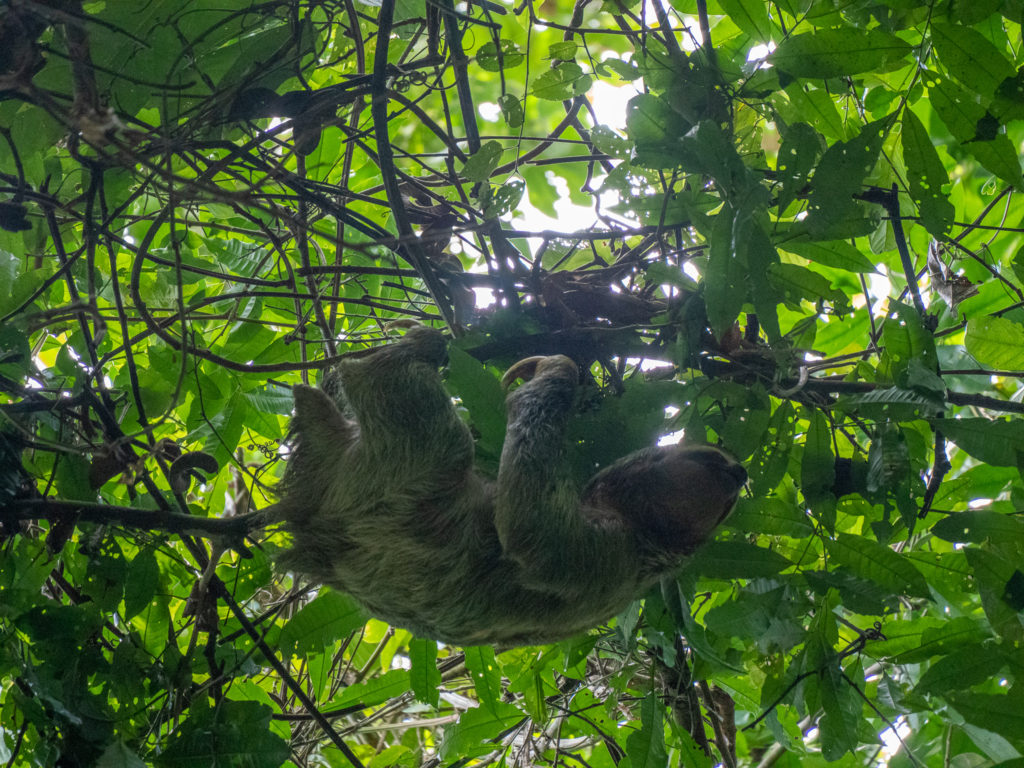
How to see sloths ethically
The most ethical way to see sloths is in the wild. They can be found all throughout Central and South America but Costa Rica is by far one of the best places to see sloths. We’d recommend heading to La Fortuna, Monteverde, Manuel Antonio, Cahuita, Corcovado or Tortuguero, where you’re all but guaranteed to see a sloth in the wild. Taking a guided sloth tour is a great way to learn more about the species and their habitat, as well as maximise your chances of a sighting. When spotting sloths in the wild, it’s important to keep a distance and not disturb them. Using binoculars, a scope and zoom/long lens for your camera can be a great way to see sloths up close, without actually approaching them. Volunteering at an ethical sanctuary or as part of a science programme can also be a great way to have a personal sloth experience. And visiting ethical sanctuaries and wildlife refuges is also a great way to guarantee a sloth sighting, without supporting unethical tourism.
Read next: The Best Wildlife Photography Camera Settings
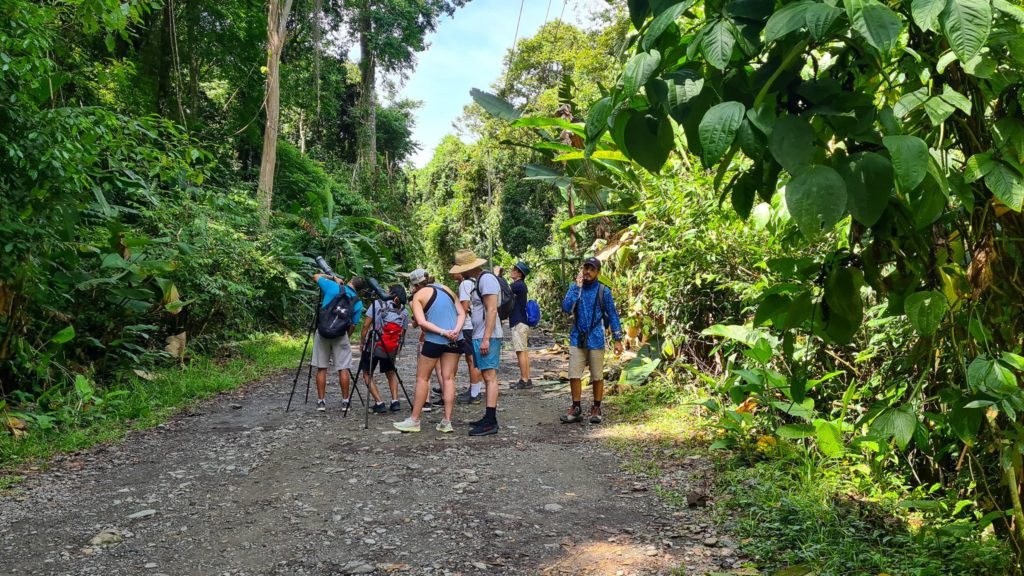
How to know if a sloth encounter is ethical
It can be hard to determine if an establishment actually cares about sloth welfare, or only claim it does. Checking the operator’s website is a great way to see if they have accreditation, sustainability initiatives and evidence they do work to conserve the species. Reading reviews, especially any negative ones, is also a great way to see what fellow travellers experienced and if anyone had any concerns about the sloths’ welfare. Finally, don’t be afraid to reach out and ask the operator questions. If you don’t like the answers, you can choose not to book the experience this time.
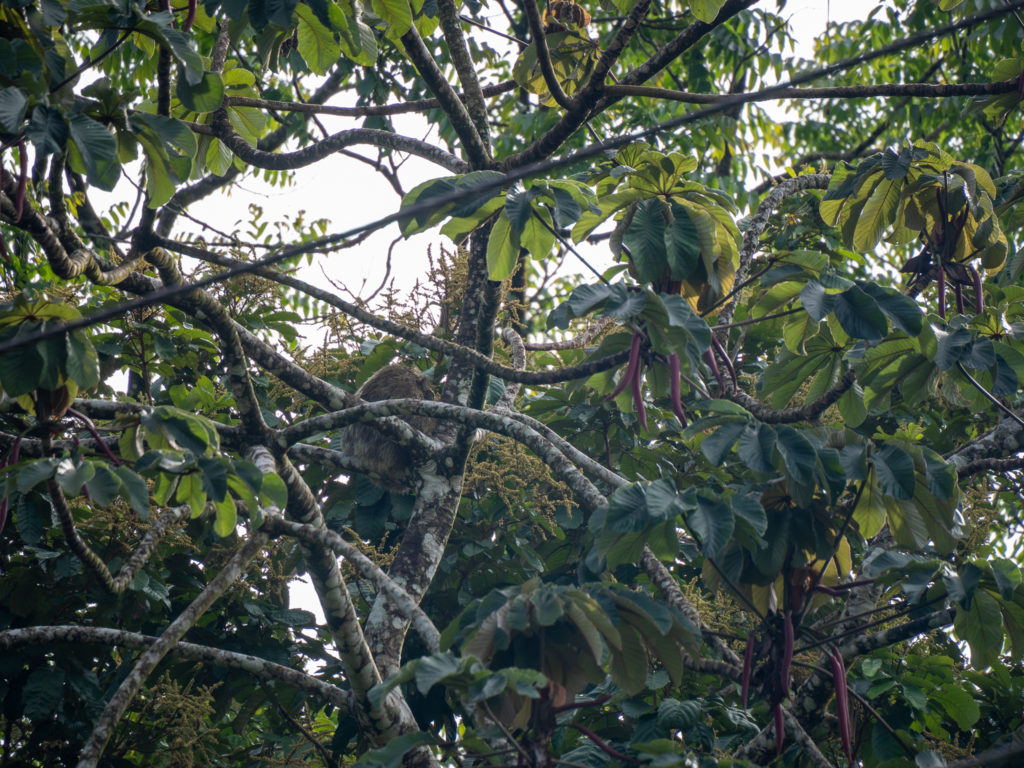
Costa Rica Sloth Frequently Asked Questions
What part of Costa Rica has the most sloths?
Sloths can be found in many parts of Costa Rica, but most notably in national parks and protected areas where they and their habitat are protected.
Where can you see sloths in Costa Rica?
La Fortuna is home to many private reserves known as Sloth Trails. Monteverde is a great place to see the nocturnal two-toed sloth, while Manuel Antonio National Park all but guarantees a sighting on the Sloth Trail. Cahuita, Corcovado, Caño Negro, Tortuguero and the Osa Peninsula are other great sloth locations in Costa Rica.
Which sloth species live in Costa Rica?
Two of the six kinds of sloth live in Costa Rica: Hoffman’s Two-toed Sloth (Choloepus Hoffmanni) and Brown-throated Three-toed Sloth (Bradypus Variegatus).
Where is the most common place to find sloths?
Sloths are mainly found in high-altitude locations where rainforests are prevalent. They live in the treetops so can be seen far off the ground, only coming down to use the toilet about once a week.
Do sloths like to be touched?
Sloths are solitary animals and scientific evidence says they do not like to be touched. Human interaction causes an increased heart rate and abnormal blood pressure, both of which are signs of stress.
Is it ethical to hold a sloth?
It is not ethical to hold a sloth as it is unnatural and causes such severe mental harm, including stress and anxiety. Touching a sloth can also cause physical defects, transfer bacteria and disturb the delicate relationship between a sloth and the algae in its fur.
Is it safe to hold a sloth?
It is never 100% safe to touch or hold a wild animal. Sloths have sharp teeth and claws and may harm you if you attempt to touch or hold them.
Read next:
Where to see Sloths (+ other wildlife) in La Fortuna
Visiting Manuel Antonio National Park: Everything You Need to Know
The Ultimate Monteverde Itinerary: 34 Best Things To Do
Where to see Quetzals in Costa Rica
Manuel Antonio Scams & Ethical Tourism
Road-tripping Costa Rica in a 4×4 Camper Car with Nomad America
